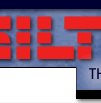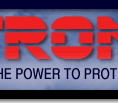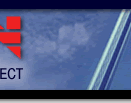






Life Safety Code (NFPA 101)SECTION 7.9 EMERGENCY LIGHTING 7.9.1 General 7.9.1.1 Emergency lighting facilities for means of egress shall be provided in accordance with Section 7.9 for the following: (1) Buildings or structures where required in Chapter 11 through Chapter 42. 7.9.1.2 For the purposes of 7.9.1.1, exit access shall include only designated stairs, aisles, corridors, ramps, escalators, and passageways leading to an exit. For purposes of 7.9.1.1, exit discharge shall include only designated stairs, aisles, corridors, ramps, escalators, and passageways leading to a public way. 7.9.1.3 Where maintenance of illumination depends on changing from one energy source to another, a delay of not more than 10 seconds shall be permitted. 7.9.2 Performance of Systems 7.9.2.1* Emergency illumination shall be provided for not less than 1-1/2 hours in the event of failure of normal lighting. Emergency lighting facilities shall be arranged to provide initial illumination that is not less than an average of 10.8 lux (1 ft.-candle) and, at any point , not less than 1.1 lux (0.1 ft.-candle), measured along the path of egress at floor level. Illumination levels shall be permitted to decline to not less than an average of 6.5 lux (0.6 ft.-candle) and, at any point, not less then 6.5 lux (0.06 ft.-candle) at the end of the 1-1/2 hours. A maximum-to-minimum illumination uniformity ratio of 40 to 1 shall not be exceeded. 7.9.2.2* The emergency lighting system shall be arranged to provide the required illumination automatically in the event of any interruption of normal lighting due to any of the following: (1) Failure of a public utility or other outside electrical power supply. 7.9.2.4 Battery-operated emergency lights shall use only reliable types of rechargeable batteries provided with suitable facilities for maintaining them in properly charged condition. Batteries used in such lights or units shall be approved for their intended use and shall comply with NFPA 70, National Electrical Code®. 7.9.2.5 The emergency lighting system shall be either continuously in operation or shall be capable of repeated automatic operation without manual intervention. 7.9.3 Periodic Testing of Emergency Lighting Equipment 7.9.3.1.1 Testing of required emergency lighting systems shall be permitted to be conducted as follows: (1) Functional testing shall be conducted at 30-day intervals for not
less then 30 seconds. SECTION 7.10 MARKING MEANS OF EGRESS 7.10.1 General 7.10.1.1 Where Required. Means of egress shall be marked in accordance with Section 7.10 where required in Chapter 11 through Chapter 42. 7.10.1.2* Exits. Exits, other than main exterior exit doors that obviously and clearly are identifiable as exits, shall be marked by an approved sign that is readily visible from any direction of exit access. 7.10.1.5 Exit Access 7.10.1.5.1 Access to exits shall be marked by approved readily visible signs in all cases where the exit or way to reach the exit is not readily apparent to the occupants. 7.10.1.5.2* New sign placement shall be such that no point in an exit access corridor is in excess of the rated viewing distance or 30 m (100 ft), whichever is less, from the nearest sign. 7.10.2* Directional Signs. A sign complying with 7.10.3 with a directional indicator showing the direction of travel shall be placed in every location where the direction of travel to reach the nearest exit is not apparent. 7.10.3* Sign Legend 7.10.3.1 Signs required by 7.10.1 and 7.10.2 shall read as follows in plainly legible letters, or other appropriate wording shall be used: EXIT. 7.10.5 Illumination of Signs 7.10.5.1* General. Every sign required by 7.10.1.2 or 7.10.1.5, other than where operations or processes require low lighting levels, shall be suitably illuminated by a reliable light source. Externally and internally illuminated signs shall be legible in both the normal and emergency lighting mode. 7.10.6 Externally Illuminated Signs 7.10.6.1.1 Externally illuminated signs required by 7.10.1 and 7.10.2, other than approved existing signs, unless otherwise provided in 7.10.6.1.2, shall read EXIT, or other appropriate wording shall be used in plainly legible letters sized as follows: (1) For new signs, the letters shall be not less than 150 mm (6 in.) high, with the principal strokes of letters not less then 19 mm (3/4 in.) wide. 7.10.6.2* Size and Location of Directional Indicator 7.10.6.2.1 Directional indicators, unless otherwise provided in 7.10.6.2.2, shall comply with the following: (1) The directional indicator shall be located outside of the EXIT legend, not less than 9.5 mm (3/8 in.) from any letter. 7.10.6.3* Level of Illumination Externally illuminated signs shall be illuminated by not less then 54 lux (5 ft.-candles) at the illuminated surface and shall have a contrast ratio of not less then 0.5. 7.10.7 Internally Illuminated Signs 7.10.7.1 Listing. Internally illuminated signs shall be listed in accordance with UL 924, Standard for Safety Emergency Lighting and Power Equipment, unless they meet one of the following criteria: (1) They are approved existing exit signs. 7.10.9 Testing and Maintenance 7.10.9.1 Inspection. Exit signs shall be visually inspected for operation of the illumination sources at intervals not to exceed 30 days, or shall be periodically monitored inaccordance with 7.9.3.1.3. 7.10.9.2 Testing. Exit signs connected to or provided with a batteryoperated emergency illumination source, where required in 7.10.4, shall be tested and maintained in accordance with 7.9.3. Excerpted from Life Safety Code 2003 (Pgs. 101–67 to 101–69)
|